Love trees? Then celebrate – 21 March is the International Day of Forests!
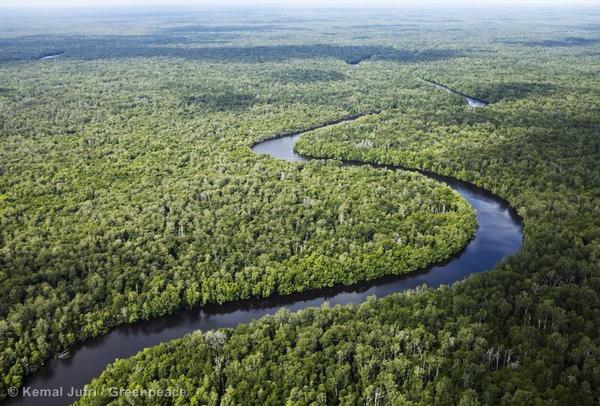
Great Bear Regenwalds in Kanada. Wasserfall im Wald.|The concession owned by PT Multi Persada Gatramegah (PT MPG), a subsidiary of Musim Mas company, a palm oil supplier to Procter & Gamble in Muara Teweh, North Barito, Central Kalimantan. Greenpeace is calling P & G to stop destroying Indonesian rainforest and to commit to a zero deforestation policy.|Deforested and burned area, still containing ash and debris from trees at a second burnt area.
During an overflight to monitor the northern state of Mato Grosso, Greenpeace identify farms with evidence of recent deforestation, caused by soy production and cattle raising.|Aerial image of clearcut logging in the natural forest of Fengtongzhai nature reserve, in the Sichuan Giant Panda Sanctuaries – a UNESCO World Heritage Site.|Calilegua National Park is the nucleus of the Biosphere Reserve of the Yungas area of UNESCO and protects 76,306 hectares of one of the most biodiverse environments of Argentina. Oil exploration takes place there without ambient impact study, violating the National Parks Law, the Native Forest Law and the Hydrocarbons Law.|Calilegua National Park is the nucleus of the Biosphere Reserve of the Yungas area of UNESCO and protects 76,306 hectares of one of the most biodiverse environments of Argentina. Oil exploration takes place there without ambient impact study, violating the National Parks Law, the Native Forest Law and the Hydrocarbons Law.|Greenpeace documents the devastation caused by the Tasmanian bushfires in January and February 2016. More than 105,000 hectares of forest have been damaged by bushfires, including a World Heritage site with trees that are over 1,000 years old.|Greenpeace documents the devastation caused by the Tasmanian bushfires in January and February 2016. More than 105,000 hectares of forest have been damaged by bushfires, including a World Heritage site with trees that are over 1,000 years old.|Forest next to the Tapajós river, in Sawré Muybu Indigenous Land, home to the Munduruku people, Pará state, Brazil. Brazilian Government plans to build 43 dams in the Tapajós river basin. The largest planned dam, São Luiz do Tapajós, will impact the life of indigenous peoples and riverside communities. Mega-dams like these threaten the fragile biome of the Amazon, where rivers are fundamental to regeneration and distribution of plant species and the survival of local flora. Renewable energy, such as solar and wind, holds the key to Brazil’s energy future.
Floresta próxima ao Rio Tapajós, na região da Terra Indígena Sawré Muybu, do povo Munduruku, no Pará. O governo brasileiro planeja construir 43 hidrelétricas na bacia do Tapajós. A maior delas, São Luiz do Tapajós, terá impacto sobre a vida dos povos indígenas e comunidades ribeirinhas. Barragens como essas ameaçam o frágil bioma da Amazônia, onde os rios são fundamentais para a regeneração e distribuição de espécies vegetais e a sobrevivência da flora local. Energias renováveis, como solar e eólica, detêm a chave para o futuro energético do Brasil. Itaituba, Pará. 21/02/2016. Foto: Valdemir Cunha/Greenpeace.|Munduruku in the Tapajós river, next to Sawré Muybu Indigenous Land, home to the Munduruku people, Pará state, Brazil. Brazilian Government plans to build 43 dams in the Tapajós river basin. The largest planned dam, São Luiz do Tapajós, will impact the life of indigenous peoples and riverside communities. Mega-dams like these threaten the fragile biome of the Amazon, where rivers are fundamental to regeneration and distribution of plant species and the survival of local flora. Renewable energy, such as solar and wind, holds the key to Brazil’s energy future.
Munduruku no Rio Tapajós, na região da Terra Indígena Sawré Muybu, do povo Munduruku, no Pará. O governo brasileiro planeja construir 43 hidrelétricas na bacia do Tapajós. A maior delas, São Luiz do Tapajós, terá impacto sobre a vida dos povos indígenas e comunidades ribeirinhas. Barragens como essas ameaçam o frágil bioma da Amazônia, onde os rios são fundamentais para a regeneração e distribuição de espécies vegetais e a sobrevivência da flora local. Energias renováveis, como solar e eólica, detêm a chave para o futuro energético do Brasil. Itaituba, Pará. 21/02/2016. Foto: Valdemir Cunha/Greenpeace.|Forest next to the Tapajós river, in Sawré Muybu Indigenous Land, home to the Munduruku people, Pará state, Brazil. Brazilian Government plans to build 43 dams in the Tapajós river basin. The largest planned dam, São Luiz do Tapajós, will impact the life of indigenous peoples and riverside communities. Mega-dams like these threaten the fragile biome of the Amazon, where rivers are fundamental to regeneration and distribution of plant species and the survival of local flora. Renewable energy, such as solar and wind, holds the key to Brazil’s energy future.
Floresta próxima ao Rio Tapajós, na região da Terra Indígena Sawré Muybu, do povo Munduruku, no Pará. O governo brasileiro planeja construir 43 hidrelétricas na bacia do Tapajós. A maior delas, São Luiz do Tapajós, terá impacto sobre a vida dos povos indígenas e comunidades ribeirinhas. Barragens como essas ameaçam o frágil bioma da Amazônia, onde os rios são fundamentais para a regeneração e distribuição de espécies vegetais e a sobrevivência da flora local. Energias renováveis, como solar e eólica, detêm a chave para o futuro energético do Brasil. Itaituba, Pará. 28/02/2016. Foto: Valdemir Cunha/Greenpeace.|A bear climbs over a fallen tree in the Great Bear Rainforest in British Columbia, Canada|View of the rainforest during the burning season, over Claudia, Mato Grosso. Farmers clear large areas for soy farming or cattle breeding.|Aerial view of the Congolese rainforest. Taken on a flight from Kinshasa to Bumba.|Baby orangutans at the Orangutan Foundation International Care Center in Pangkalan Bun, Central Kalimantan. Expansion of oil palm plantations is destroying their forest habitat.
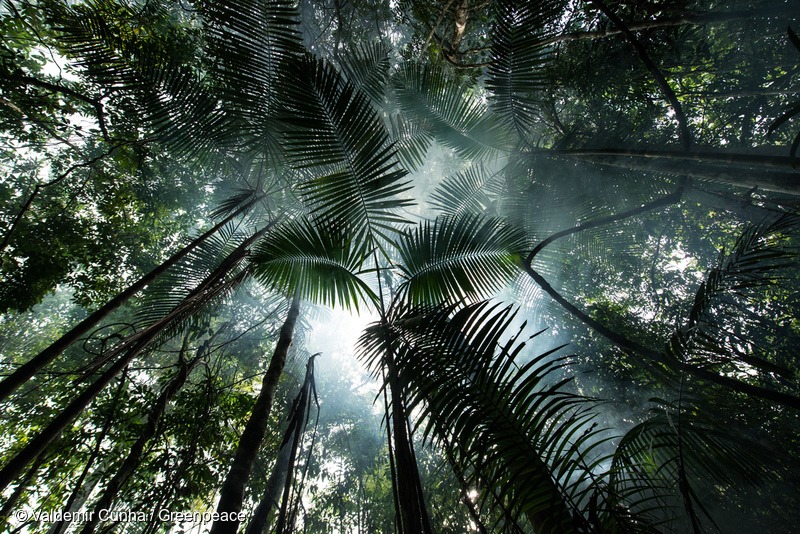
By Dawn Bickett, content editor for the Americas at Greenpeace.
Without healthy, thriving forests, our planet cannot sustain life. But they are facing serious threats from human activity. As much as 80 percent of the world’s forests have already been degraded or destroyed.
The good news is that people are fighting back to protect these crucial parts of our planet. Here’s a look at eight different people-powered fights for forests from all over the world.
The rainforests and peatlands of Indonesia
More than a quarter of Indonesia’s forests have disappeared in the past 25 years, destroyed for products like paper products and palm oil. Even worse, the destruction from these industries is driving conditions that fuel immense forest fires – displacing people and wildlife, and sending massive amounts of carbon into the atmosphere.
Consumers all over the world are demanding that international brands using products like palm oil act to stop this forest destruction. Join the call to protect the rainforests of Indonesia!
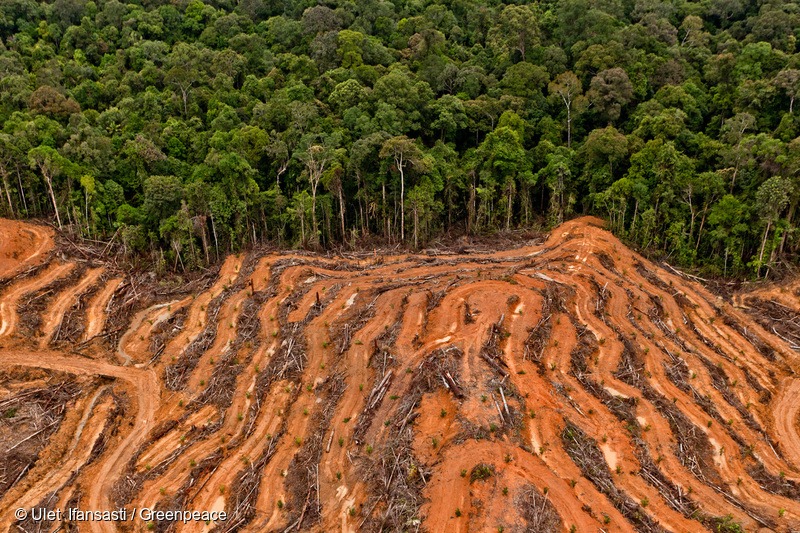
The concession owned by PT Multi Persada Gatramegah (PT MPG), a subsidiary of Musim Mas company, a palm oil supplier to Procter & Gamble in Muara Teweh, North Barito, Central Kalimantan. Greenpeace is calling P & G to stop destroying Indonesian rainforest and to commit to a zero deforestation policy.
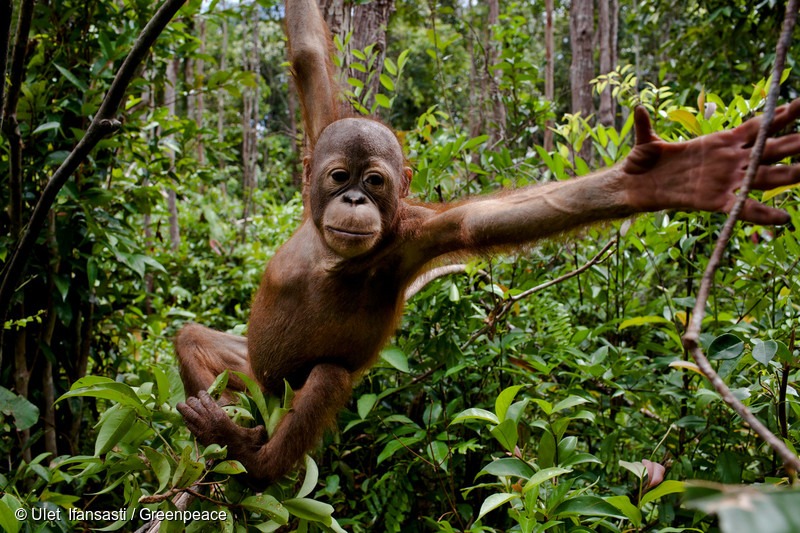
Baby orangutans at the Orangutan Foundation International Care Center in Pangkalan Bun, Central Kalimantan. Expansion of oil palm plantations is destroying their forest habitat.
Canada’s Great Bear Rainforest
In February, we celebrated the protection of Canada’s Great Bear Rainforest – one of the largest remaining coastal temperate rainforests on Earth. A staggering 85 percent of the forest, totaling 3.1 million hectares, will now be off limits to industrial logging. When the campaign started in the early 1990s, less than five percent of the rainforest was protected.
This victory was only possible because environmental groups, Indigenous Peoples, government officials, forestry companies and everyday people pushed for it. Learn more and spread the good news about the protection of this incredible forest!
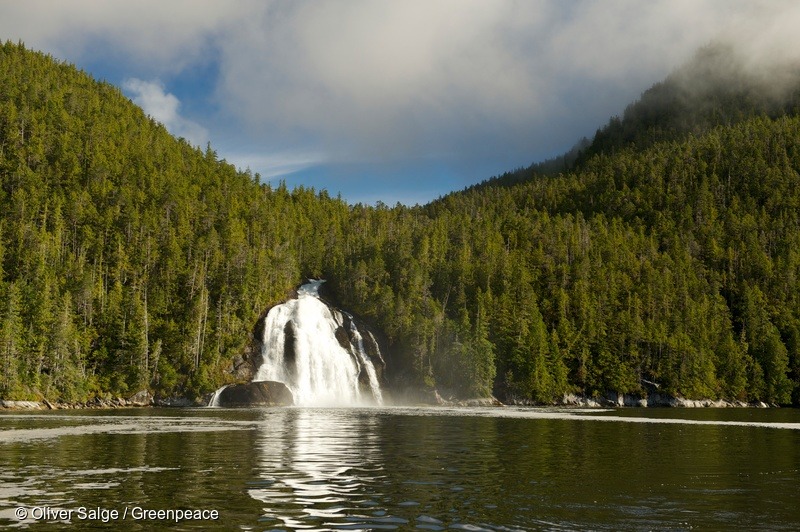
Great Bear Rainforest in Canada. Forest with waterfall.
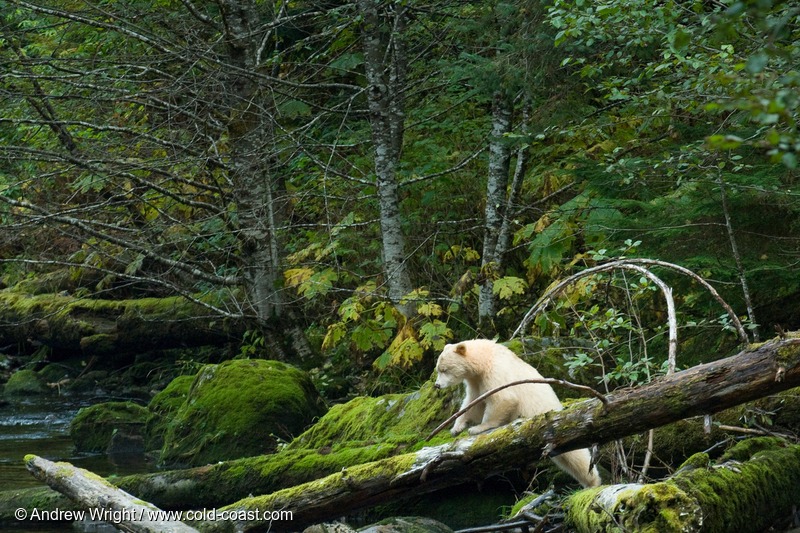
A bear climbs over a fallen tree in the Great Bear Rainforest in British Columbia, Canada
The Amazon rainforest
Cattle ranching is the single biggest use of cleared rainforest in the Amazon. Nearly 80 percent of deforested areas in Brazil were used for pasture as of 2009. The survival of the Amazon rainforest is fundamental for numerous plant and animal species, and for many Indigenous communities that depend on healthy forests for their livelihoods.
That’s why people in Brazil are demanding that Amazon destruction be taken off their plates – for major supermarkets to stop supplying cattle connected to deforestation.
Want to cut down your own meat consumption for the environment? Make a pledge here.
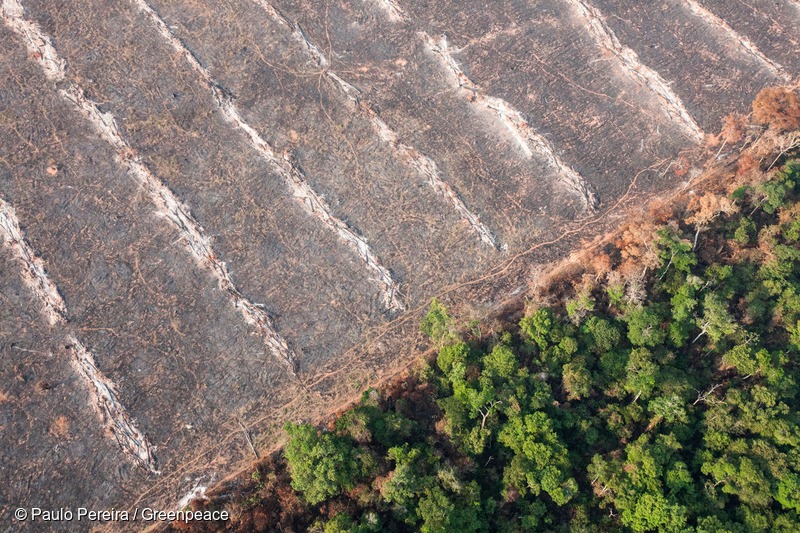
Deforested and burned area, still containing ash and debris from trees at a second burnt area.
During an overflight to monitor the northern state of Mato Grosso, Greenpeace identify farms with evidence of recent deforestation, caused by soy production and cattle raising.
Tasmania’s World Heritage-listed forests
“This is what climate change looks like,” said David Bowman, Professor of Environmental Change Biology at the University of Tasmania. Earlier this year, fires ravaged areas of Tasmania, Australia’s island state. Caused by dry lightning strikes, the fires have destroyed tracts of ancient World Heritage-listed forests. Some of the trees were over a thousand years old. In 2015, Tasmania experienced its driest spring on record and record-breaking high temperatures in December.
The fires in Tasmania are a clear reminder that the time is NOW to address climate change.
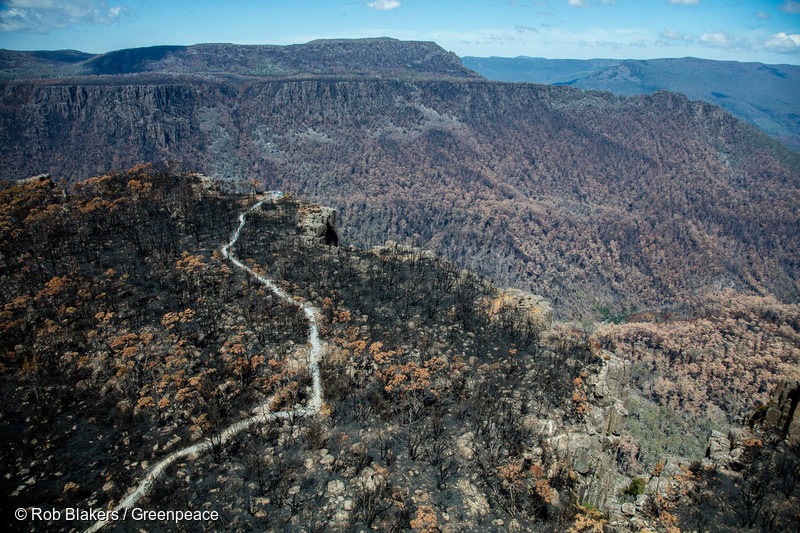
Greenpeace documents the devastation caused by the Tasmanian bushfires in January and February 2016. More than 105,000 hectares of forest have been damaged by bushfires, including a World Heritage site with trees that are over 1,000 years old.
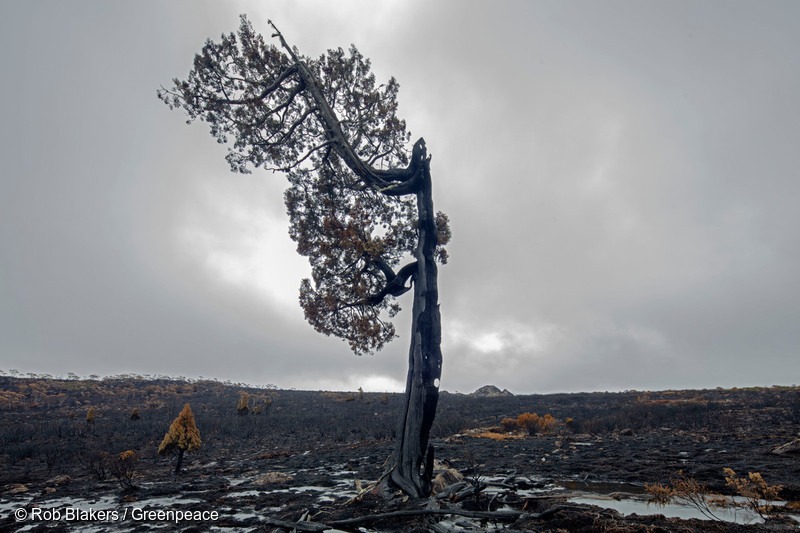
Greenpeace documents the devastation caused by the Tasmanian bushfires in January and February 2016. More than 105,000 hectares of forest have been damaged by bushfires, including a World Heritage site with trees that are over 1,000 years old.
The Tapajós River basin
The Tapajós River, in the heart of the Amazon rainforest, is under threat. The Brazilian government is gearing up to build a mega-dam that would create a reservoir the size of New York City, threatening the livelihoods of the Munduruku Indigenous People, and destroying precious ecosystems.
Greenpeace has joined Munduruku communities in fighting the mega-dam project. Together, we can keep the Tapajós alive!

Forest next to the Tapajós river, in Sawré Muybu Indigenous Land, home to the Munduruku people, Pará state, Brazil. Brazilian Government plans to build 43 dams in the Tapajós river basin. The largest planned dam, São Luiz do Tapajós, will impact the life of indigenous peoples and riverside communities. Mega-dams like these threaten the fragile biome of the Amazon, where rivers are fundamental to regeneration and distribution of plant species and the survival of local flora. Renewable energy, such as solar and wind, holds the key to Brazil’s energy future.
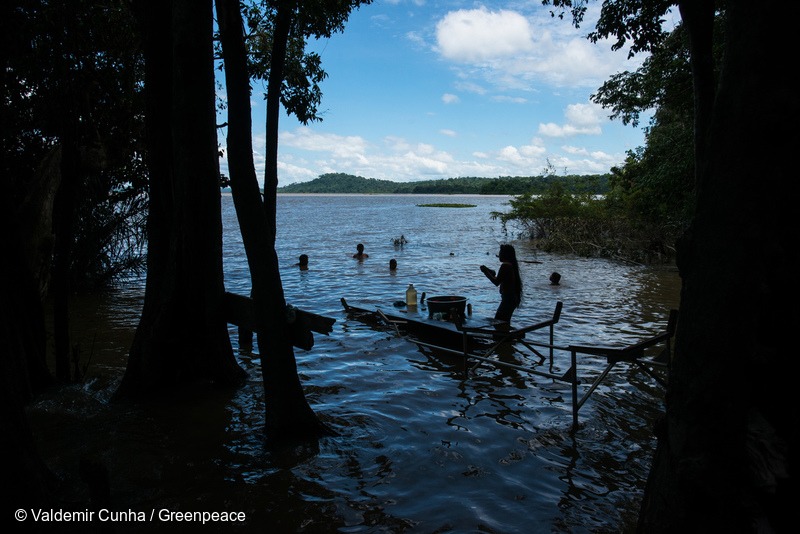
Munduruku in the Tapajós river, next to Sawré Muybu Indigenous Land, home to the Munduruku people, Pará state, Brazil. Brazilian Government plans to build 43 dams in the Tapajós river basin. The largest planned dam, São Luiz do Tapajós, will impact the life of indigenous peoples and riverside communities. Mega-dams like these threaten the fragile biome of the Amazon, where rivers are fundamental to regeneration and distribution of plant species and the survival of local flora. Renewable energy, such as solar and wind, holds the key to Brazil’s energy future.
China’s giant panda habitat
In October, Greenpeace East Asia revealed that China’s iconic giant pandas were under threat from rampant illegal logging in the world’s largest panda habitat. Shortly after this was exposed and thousands of people shared this disturbing news, the Sichuan Forestry Bureau began developing a strategy to make sure commercial deforestation doesn’t impact the giant panda’s forest home.
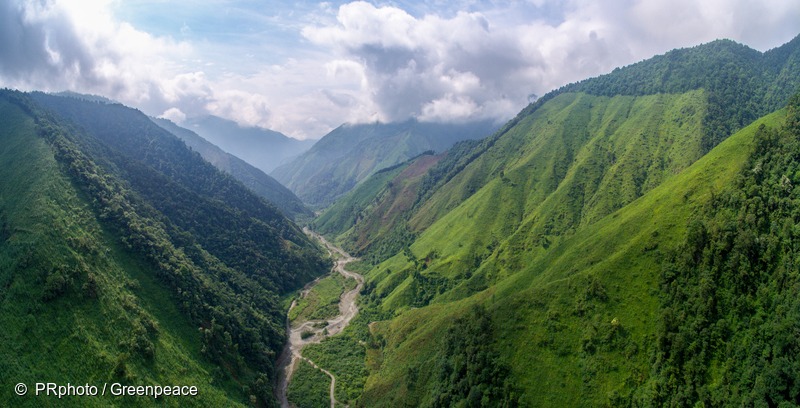
Aerial image of clearcut logging in the natural forest of Fengtongzhai nature reserve, in the Sichuan Giant Panda Sanctuaries – a UNESCO World Heritage Site.
Argentina’s Calilegua National Park
Calilegua National Park protects 76,306 hectares of one of the most biodiverse environments in Argentina and is home to half the country’s birds, as well as endangered species like the jaguar. Still, the government had sanctioned oil drilling within the park’s boundaries.
In December 2015, after more than 270,000 people (including these kids!) stood up to this plan, the provincial legislature sanctioned a law that canceled oil exploitation within the park! And this year, the governor has demanded a plan be made to close the oil wells.

Calilegua National Park is the nucleus of the Biosphere Reserve of the Yungas area of UNESCO and protects 76,306 hectares of one of the most biodiverse environments of Argentina. Oil exploration takes place there without ambient impact study, violating the National Parks Law, the Native Forest Law and the Hydrocarbons Law.
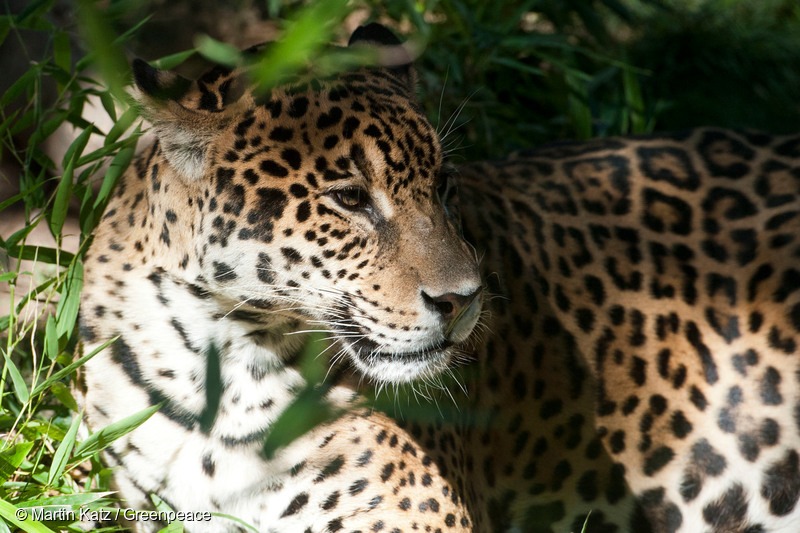
Calilegua National Park is the nucleus of the Biosphere Reserve of the Yungas area of UNESCO and protects 76,306 hectares of one of the most biodiverse environments of Argentina. Oil exploration takes place there without ambient impact study, violating the National Parks Law, the Native Forest Law and the Hydrocarbons Law.
The Congo Basin rainforest
The Congo Basin rainforest is the second largest rainforest in the world, after the Amazon, and is home to forest elephants, gorillas, bonobos, okapis, hundreds of bird species and thousands of plants. The government of the Democratic Republic of the Congo is moving to lift a 14-year moratorium on new logging concessions in the country. The move could open up large parts of the second largest tropical rainforest in the world to a raft of threats from palm oil and rubber plantations to widespread industrial logging.
That’s why international organisations like Greenpeace and local civil society groups in the DRC are standing together and demanding the moratorium be kept in place! Join their call and demand zero deforestation in the Congo Basin.
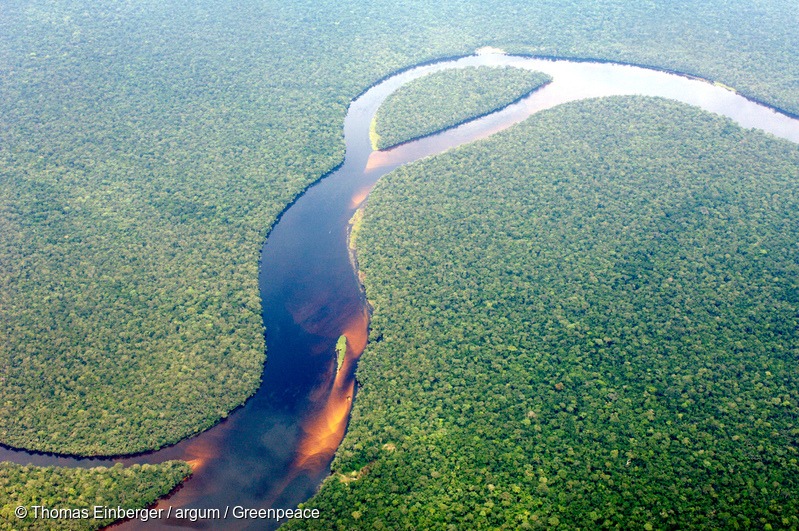
Aerial view of the Congolese rainforest. Taken on a flight from Kinshasa to Bumba.
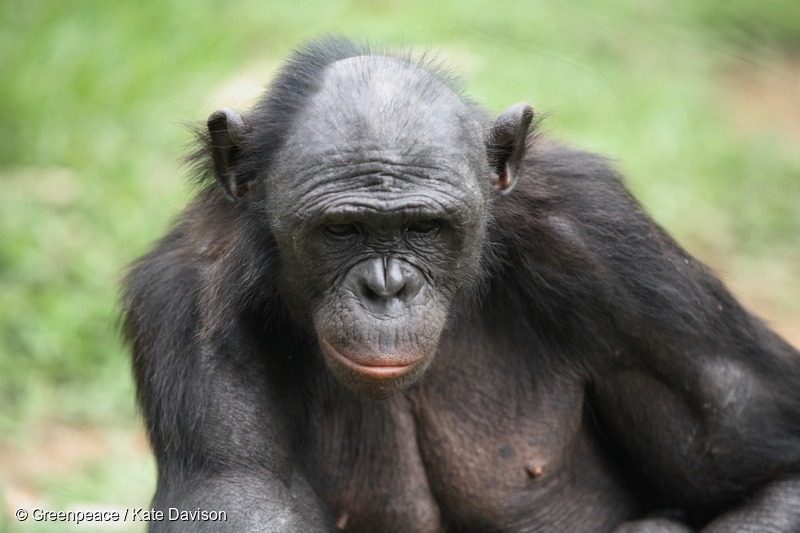
A bonobo in a bonobo rehabilitation center near Kinshasa. Bonobos were the last of the great apes to be discovered and live exclusively in the Democratic Republic of the Congo. They are considered to be man’s closest relative and organise themselves in sophisticated social groups. They are highly endangered from hunting and loss of habitat. Expansion of logging into remaining areas of intact forests in the Democratic Republic of Congo will destroy globally critical carbon reserves and impact biodiversity.
These are just eight of the thousands of battles people are waging to protect forests around the globe. What forest are you celebrating this International Day of Forests? Tell us about it in the comments!
Dawn Bickett is the content editor for the Americas at Greenpeace.


